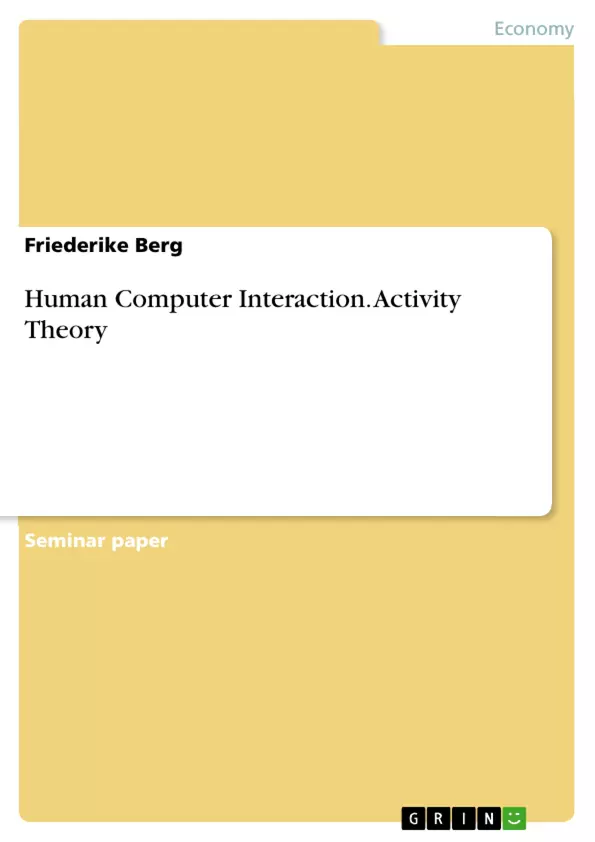Vygotsky, L., Leont’ev, A. N., and Luria, A. R. have invented the activity theory in the early 19th century (Miller, C., 2008). “Activity theory is a conceptual framework based on the idea that activity is primary, that doing precedes thinking, that goals, images, cognitive models, intentions, and abstract notions like “definition” and “determinant” grow out of people doing things” (Morf, M. E. & Weber, W. G., 2000, p.81).
Inhaltsverzeichnis (Table of Contents)
- INTRODUCTION TO ACTIVITY THEORY
- THEORETICAL STRUCTURE
- Rules
- Instruments
- EXAMPLES OF ACTIVITY THEORY
Zielsetzung und Themenschwerpunkte (Objectives and Key Themes)
This paper explores Activity Theory as a framework for understanding human activity and its application in real-world scenarios. It aims to provide a clear understanding of the theory's structure, principles, and practical implications.
- The fundamental structure and principles of Activity Theory
- The three hierarchical levels of activities, actions, and operations
- The role of tools, rules, and division of labor in shaping activities
- Real-world examples illustrating the application of Activity Theory
- The potential of Activity Theory for understanding and designing interactive systems
Zusammenfassung der Kapitel (Chapter Summaries)
- Introduction to Activity Theory: This chapter introduces the concept of Activity Theory, outlining its origins and defining its core principles. It emphasizes the idea that human activity is primary, with thinking arising from doing, and explores how goals, intentions, and cognitive models emerge from practical engagement with the world.
- Theoretical Structure: This chapter delves into the theoretical structure of Activity Theory, presenting Engeström's model of subject-object interaction, mediated by tools, rules, and division of labor. It illustrates the interconnectedness of these elements and how they contribute to the outcome of an activity.
- Examples of Activity Theory: This chapter showcases practical applications of Activity Theory through real-life examples. It analyzes two distinct cases: the launch of a new style by a custom handbag company and the market launch of an e-law learning game app. These examples demonstrate how the theory can be used to understand and analyze complex activities in various domains.
Schlüsselwörter (Keywords)
Activity Theory, human activity, subject-object interaction, tools, rules, division of labor, hierarchical structure, activities, actions, operations, real-world examples, design, interactive systems.
- Quote paper
- Friederike Berg (Author), 2018, Human Computer Interaction. Activity Theory, Munich, GRIN Verlag, https://www.grin.com/document/505676



